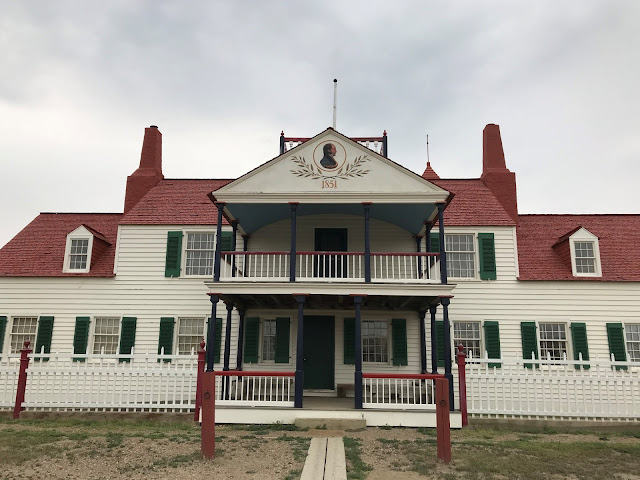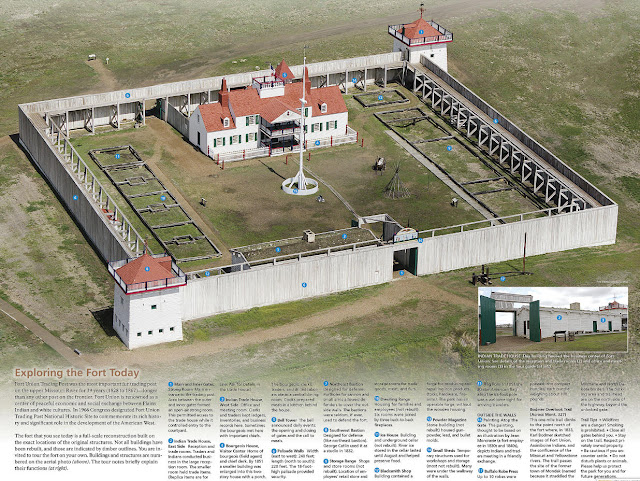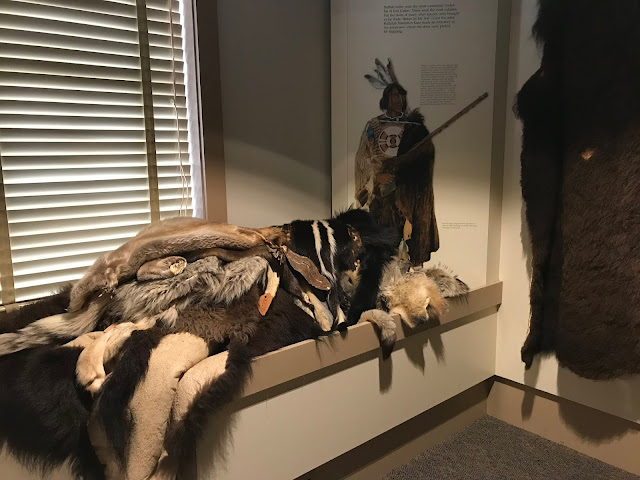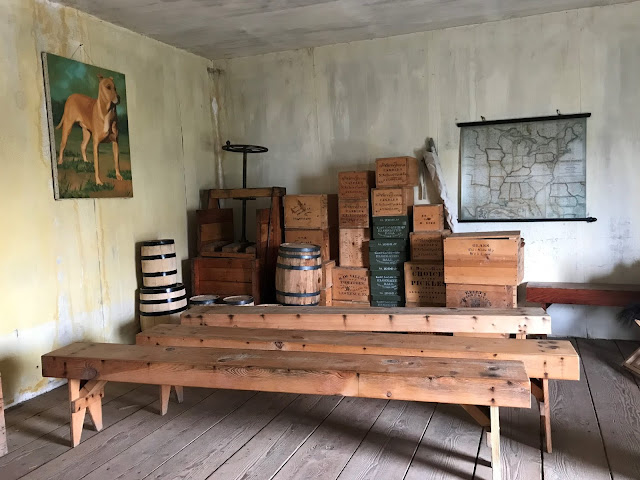 |
| North Dakota Tourism Photo |
 |
| You can see our rig on the Montana side... |
 |
| ...and crossed the road and were in North Dakota! |
John Jacob Astor started the American Fur Company and about the time Fort Union was built, merged with his two toughest rivals to form one company to control fur trade among the upper Missouri River. In 1834, Astor sold his business which eventually became Pierre Chouiteau, Jr. & Co.
Notable people of Fort Union are Kenneth McKenzie (1797-1861) and Alexander Culbertson (1809-1879) as the bourgeois (the person who conducted trade in the fort). McKenzie was there from 1827 to 1837 and Culbertson from 1837-1848. Culbertson married Natawistacha (Medicine Snake Woman), daughter of a Blackfoot chief and she aided in negotiations during trade times. Edwin Thompson Denig (1812-1858) was bourgeois from 1848-1856 and he also married an Indian, Thachik'anawinyan (Little Deer Woman), daughter of Assiniboine chief. Charles Larpenteur
The fort is quit interesting as well. I'll show photos and tell what each thing is. Well, start with the outside. Here is an overall birds-eye view.
 |
| Southwest Bastian - George Catlin used it as his studio! Scott and Coco & Chanel walking up to the front gate around the corner to the left. |
 |
| The Front Gate (it faces the Missouri River) The iron at the bottom of the photo is the buffalo hide iron press. |
 |
| The Painting Atop the Gate This is thought to be based in an illustration by Jean Moncravie (1830-1840) depicting friendly trade meetings. |
 |
| The area between the outer and inner gates from an open-air strong room which permitted access to the trade house (see the smaller house with the woman in the entrance?) |
 |
| Bourgeois House (also the visitor center) The bourgeois was the field agent of the fort. The chief clerk also lived here. |
 |
| To the right of the building was the powder magazine as well as storage rooms. The buildings are gone - just the foundation remains. |
 |
| This is the security banister on top of the palisade walls. The building is the Indian Trading Office. |
 |
| This is a sign next to the SW Bastian. |
 |
| View from the SW Bastian |
 |
| Cannon in the SW Bastian This room was George Catlin's art studio. |
 |
| Openings for artillery were closed using wood, buffalo and an iron handle. |
 |
| The blacksmith shop was below the SW Bastian |
 |
| These are the remains of the Housing for Families and the Ice House on the far right. |
Let look inside the Visitor Center (Bourgeois House). There was an information desk as well as a small store.
Also at the visitor center is a lovely exhibit.
A few more photos of the fort...
Next, let's go into the Indian Trading House. There were two sides to this house - the east and west. The west side was a clerk's office.
The east side had two rooms. The first large room was where negotiations took place. Men would sit on the rug and argue on prices. If the price or trade was met, they shook hands and things were official. If trade didn't work, men just walked away - no harm, no foul.
The second room was where goods were kept to be traded. Items and sales were written down on a ledger.
This past June was the Fort Union Rendezvous and in early August was the Indian Art Showcase. If either of these things interest you, check the website for next years dates.
This was a really fun place to be. The dogs were glad they could go walk among the fort as well. I love how much we learn about our country as we tour from place to place.
 |
| Fritz III |
 |
| The NE Bastian had a buffalo weather vane! |
 |
| So awesome! |
The east side had two rooms. The first large room was where negotiations took place. Men would sit on the rug and argue on prices. If the price or trade was met, they shook hands and things were official. If trade didn't work, men just walked away - no harm, no foul.
The second room was where goods were kept to be traded. Items and sales were written down on a ledger.
This past June was the Fort Union Rendezvous and in early August was the Indian Art Showcase. If either of these things interest you, check the website for next years dates.













































